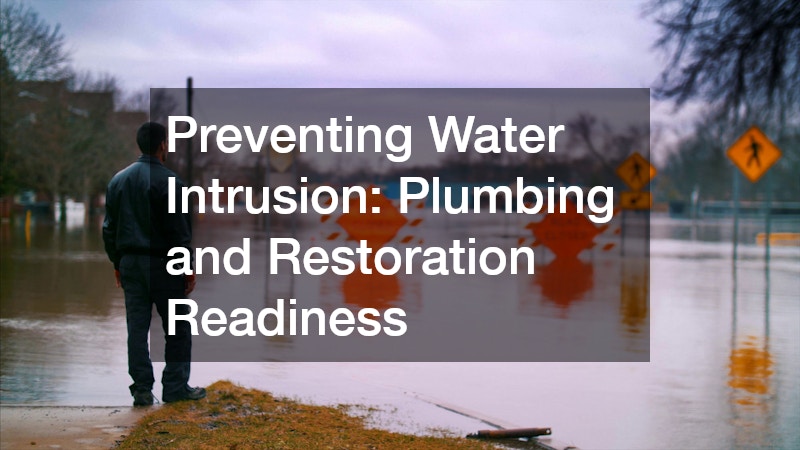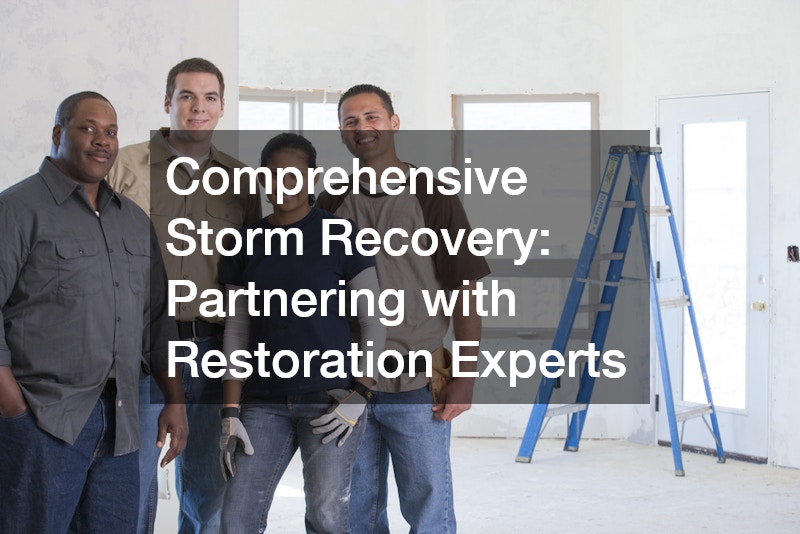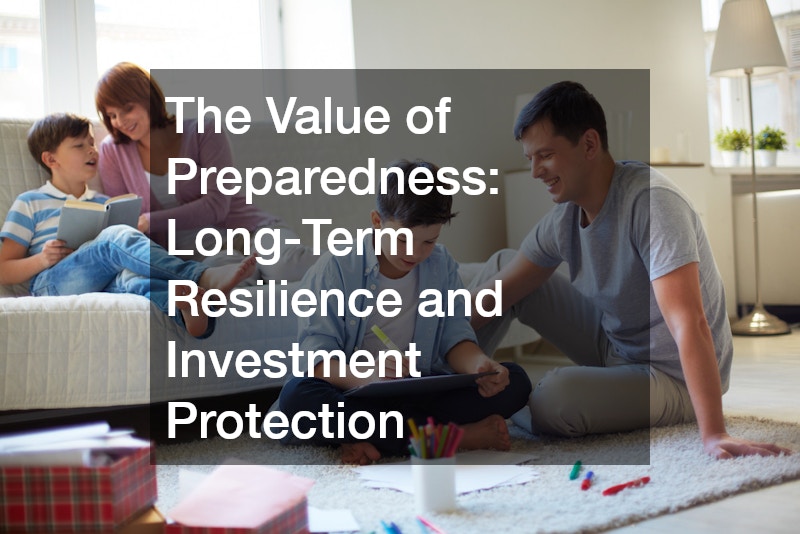When severe weather strikes, few things matter more than the safety of your home and family. Hurricanes, hail, high winds, and torrential rains can cause extensive damage within minutes, leading to costly repairs, insurance claims, and prolonged disruption. Yet many homeowners underestimate how much control they actually have over preventing or minimizing storm-related damage. By taking proactive steps before the next major weather event, you can not only protect your investment but also enhance your home’s long-term value, resilience, and comfort.
This comprehensive article explores the essential strategies, materials, and professional services that contribute to robust storm preparedness. From fortifying structural components and preventing water intrusion to ensuring proper drainage and emergency readiness, implementing these best practices can make the difference between minor cleanup and major loss.
Strengthening the First Line of Defense: Windows and Roofing
When discussing home protection, the roof and windows are often the most vulnerable points during severe weather. Strong winds can rip shingles loose, while flying debris can shatter standard glass panes, exposing the interior to rain and pressure shifts. Taking steps to fortify these areas is one of the most effective forms of home storm safety.
Upgrading to an impact window system is among the smartest investments you can make in weather resilience. Designed with laminated glass and reinforced frames, these windows can withstand hurricane-level winds and projectile impacts that would destroy conventional panes. More importantly, impact windows prevent sudden air pressure changes that could otherwise compromise the integrity of your roof or walls during a storm. They also provide year-round benefits such as improved insulation, noise reduction, and UV protection, enhancing both safety and energy efficiency.
Equally vital is the condition of your roofing system. Materials such as asphalt shingles or clay tiles, while common, may not provide optimal protection in regions prone to strong storms. Homeowners can consider installing rubber roofing materials, which offer superior flexibility, water resistance, and longevity. These materials are particularly useful on flat or low-slope roofs, where standing water can lead to leaks and structural decay. Their elasticity allows them to expand and contract with temperature changes, reducing cracking and splitting over time.
Routine inspections by a qualified roofing contractor can help identify early signs of wear, loose flashing, or compromised sealant. Addressing these issues before storm season dramatically reduces the risk of leaks and wind uplift. Combining strong impact windows with durable roofing materials forms a powerful first layer of protection for your property, significantly enhancing your overall home storm safety profile.
Reinforcing the Structure: Building with Resilience in Mind
A home’s durability during a storm is largely determined by its underlying construction. Traditional wood-frame houses can flex and absorb some pressure, but they are also more prone to water damage, mold, and rot after flooding. For homeowners building new properties or undertaking major renovations, concrete construction offers unparalleled strength and resilience.
Concrete is naturally resistant to fire, water, and wind damage, making it one of the most storm-resistant materials available. Unlike wood, it doesn’t warp, decay, or provide a breeding ground for mold and mildew. When reinforced with steel bars (rebar) and poured into solid forms, it creates a continuous load path that transfers stress away from weaker points. This reduces the likelihood of collapse or severe structural failure during high-impact weather events.
Beyond structural walls, homeowners should also consider concrete for driveways, retaining walls, and patios. These areas often take the brunt of erosion and flooding. A well-designed concrete landscape system can help divert water flow and protect against soil washout, contributing to comprehensive home storm safety.
Moreover, modern concrete building methods allow for excellent energy efficiency and design flexibility. Insulated concrete forms (ICFs), for example, combine insulation with structural strength, improving both comfort and sustainability. By incorporating these resilient materials from the foundation up, you create a property that can withstand nature’s challenges while maintaining aesthetic appeal and long-term value.
Managing Runoff and Ground Stability: The Role of Erosion Control
Heavy rainfall and flooding can compromise a property’s stability, especially on sloped terrain. Soil erosion not only affects landscaping but can also undermine foundations, driveways, and retaining walls. To safeguard against this often-overlooked threat, investing in erosion control services is critical for maintaining the integrity of your land and supporting home storm safety.
Erosion control professionals assess your property’s drainage patterns and soil composition to design tailored solutions. These may include the installation of retaining walls, drainage swales, silt fences, or vegetation barriers to absorb and redirect runoff. In coastal or hillside regions, more advanced systems such as geotextile mats and riprap can prevent soil loss during severe rain events.
Proper drainage also plays a crucial role in preventing basement flooding. A well-graded yard should slope away from the foundation to direct water flow toward designated drainage systems or storm sewers. For homes in flood-prone zones, installing French drains, sump pumps, and gutter extensions can significantly reduce pooling water around the structure.
Homeowners often underestimate the connection between soil management and structural health. Uncontrolled erosion can expose pipes, shift foundations, and weaken the very ground your home stands on. By incorporating erosion control strategies into your landscaping plan, you not only preserve curb appeal but also fortify your entire property’s resilience. These measures collectively enhance home storm safety by ensuring the ground beneath your home remains as secure as the roof above it.
Preventing Water Intrusion: Plumbing and Restoration Readiness
When storms bring heavy rainfall or flooding, even the best-constructed homes can experience water intrusion. Burst pipes, sewer backups, and drainage failures often occur when systems are not adequately maintained. Working with local plumbing contractors ensures your home’s water infrastructure can handle severe conditions and respond effectively if problems arise.
Plumbers can inspect sump pumps, clean out drains, and install backflow preventers that stop contaminated water from entering your system. They can also identify aging or corroded pipes that may burst under pressure. During storm preparation, ensuring that water flow pathways are clear is one of the most practical steps toward home storm safety.
Despite preventive efforts, severe flooding can still lead to moisture damage. Partnering with water restoration companies before disaster strikes gives you a clear plan for fast response. These professionals specialize in removing standing water, drying structural materials, and preventing mold growth. Their rapid intervention can often mean the difference between minor repairs and complete reconstruction.
Restoration teams also help with insurance documentation, damage assessment, and sanitization, ensuring your home is safe to occupy after a storm. By combining plumbing preparedness with reliable restoration support, you create a safety net that limits downtime, preserves your home’s value, and supports comprehensive home storm safety even in the aftermath of severe weather.
Addressing Roof and Surface Repairs After Storms
Even the most well-built roofs can sustain damage after prolonged exposure to high winds, hail, or flying debris. Recognizing and addressing problems quickly can prevent secondary issues such as leaks, insulation damage, and mold growth. Working with a professional roof repair service immediately following a storm is a crucial step in mitigating long-term losses and maintaining home storm safety.
A qualified roofing expert will inspect for missing shingles, compromised flashing, and damaged gutters. Temporary tarping can prevent further water intrusion while permanent repairs are arranged. Delaying roof repair not only increases costs but can also void warranties or insurance coverage if the issue worsens over time.
In addition to roof repairs, outdoor surfaces such as driveways and walkways often suffer cracks or displacement due to water infiltration. Partnering with local paving contractors can help restore these areas and improve drainage, preventing water from seeping toward the foundation. Pavers can also recommend permeable materials that allow water to filter through rather than accumulate on the surface, enhancing both safety and sustainability.
Regular roof maintenance and ground-level inspections play an integral role in protecting your home investment. Proactive repair work ensures that small vulnerabilities are sealed before they evolve into major problems, solidifying your home storm safety plan for years to come.
Comprehensive Storm Recovery: Partnering with Restoration Experts
Despite your best preparation, no home is completely immune to storm damage. High winds, floods, and debris can cause structural harm, electrical hazards, and extensive water intrusion. In such situations, the expertise of storm damage restoration professionals becomes indispensable. These specialists not only repair visible destruction but also address hidden damage that could threaten your home’s stability over time.
A comprehensive restoration process begins with a full property assessment, identifying structural weaknesses, water contamination, and potential mold growth. Using industrial-grade equipment, technicians extract moisture, dehumidify affected areas, and disinfect surfaces. They also coordinate closely with insurance adjusters to ensure accurate documentation of all losses—a step that can significantly expedite claims and reimbursement.
In addition to physical repairs, restoration experts often provide guidance on future mitigation measures. This may include reinforcing weak points, upgrading insulation, and installing surge protection systems. Partnering with these professionals ensures that your home not only recovers but also emerges stronger and more resistant to future storms. Integrating storm restoration expertise into your overall home storm safety strategy guarantees both immediate recovery and long-term durability. By learning from each event and implementing recommended upgrades, you continuously improve your property’s ability to withstand nature’s unpredictable forces.
Preparing for the Worst: Emergency Shelters and Safety Planning
While structural reinforcements and drainage improvements can minimize damage, personal safety must remain the top priority. In severe weather scenarios—especially tornadoes or hurricanes—having access to storm shelter services can be life-saving. These shelters are engineered to withstand extreme pressure, flying debris, and structural collapse, offering secure refuge for you and your family.
Professional storm shelter providers can design customized safe rooms built into basements, garages, or standalone structures. They adhere to FEMA and ICC safety standards, ensuring they meet the highest criteria for wind and impact resistance. Beyond installation, regular inspection and maintenance are crucial to confirm that entry mechanisms, ventilation, and seals remain functional.
A complete emergency plan should also include communication strategies, evacuation routes, and supply kits. Essentials such as flashlights, batteries, water, non-perishable food, and first-aid supplies should be stored in easily accessible locations. Families should practice shelter-in-place procedures regularly, ensuring everyone knows their responsibilities during an emergency. Integrating professional storm shelters with a well-rehearsed safety plan represents a holistic approach to home storm safety. These measures not only safeguard lives but also bring invaluable peace of mind when facing unpredictable natural threats.
The Value of Preparedness: Long-Term Resilience and Investment Protection
Protecting your home from storm damage is not just about minimizing losses—it’s about safeguarding your most significant financial and emotional investment. Proactive planning ensures that every element, from foundation to rooftop, functions as part of a unified defense system. Whether it’s the durability of your materials, the efficiency of your drainage, or the reliability of your emergency plan, each component contributes to comprehensive home storm safety.
Financially, homes designed and maintained with storm resistance in mind often command higher property values and lower insurance premiums. Prospective buyers recognize the long-term benefits of reinforced structures, efficient drainage, and durable roofing. Moreover, the sense of security that comes from knowing your home can withstand severe weather adds immeasurable personal value. Preparedness is not simply an expense—it’s an investment in your home’s longevity and your family’s well-being.
The ripple effects of preparedness extend beyond immediate protection. When you take the initiative to strengthen your home, you also contribute to community resilience. Neighbors who witness proactive measures are often encouraged to follow suit, creating safer neighborhoods where collective awareness reduces overall disaster recovery costs. In many regions, homeowners may even qualify for grants or tax incentives for implementing storm-resistant upgrades, further offsetting improvement costs while reinforcing home storm safety.
By working with skilled contractors and restoration professionals—from roofers and plumbers to erosion specialists and safety consultants—you build a network of expertise that keeps your home protected year-round. Regular inspections, timely repairs, and continuous improvements create a cycle of resilience that pays off in reduced maintenance costs and enhanced stability. Documentation of these efforts can also prove invaluable when dealing with insurance claims, providing evidence of responsible maintenance and preventive care.
The key to enduring safety lies in prevention. Storms may be inevitable, but the damage they cause doesn’t have to be. With the right materials, services, and strategies, homeowners can achieve both security and sustainability—preserving not only the structure of their house but the comfort, health, and safety of everyone within. Long-term commitment to preparedness turns your property into more than a home—it becomes a stronghold capable of weathering the fiercest storms with confidence and stability.







